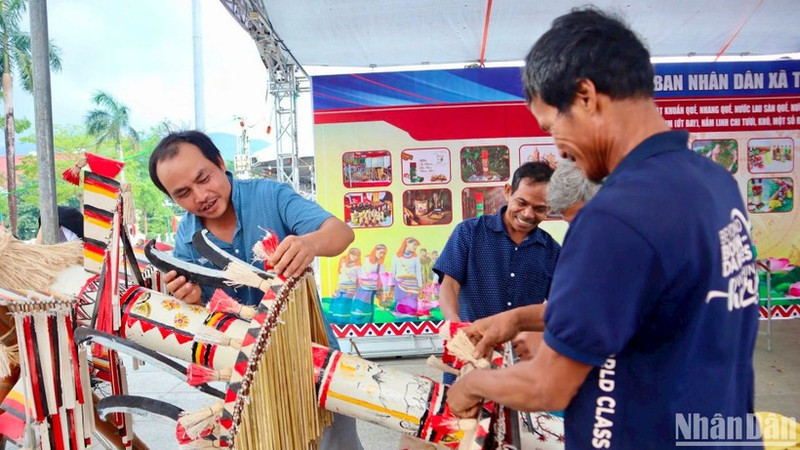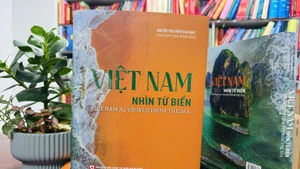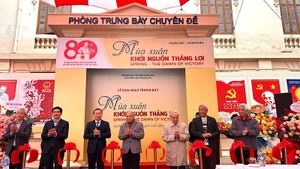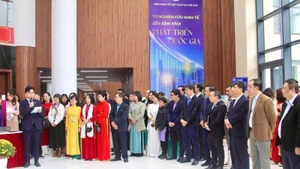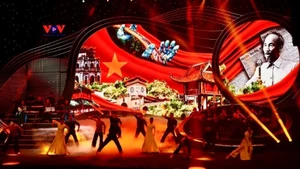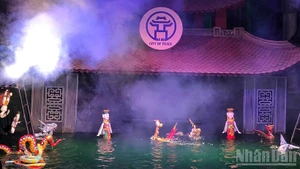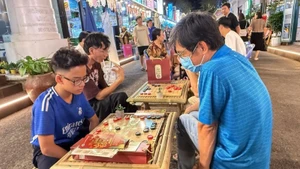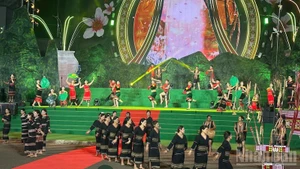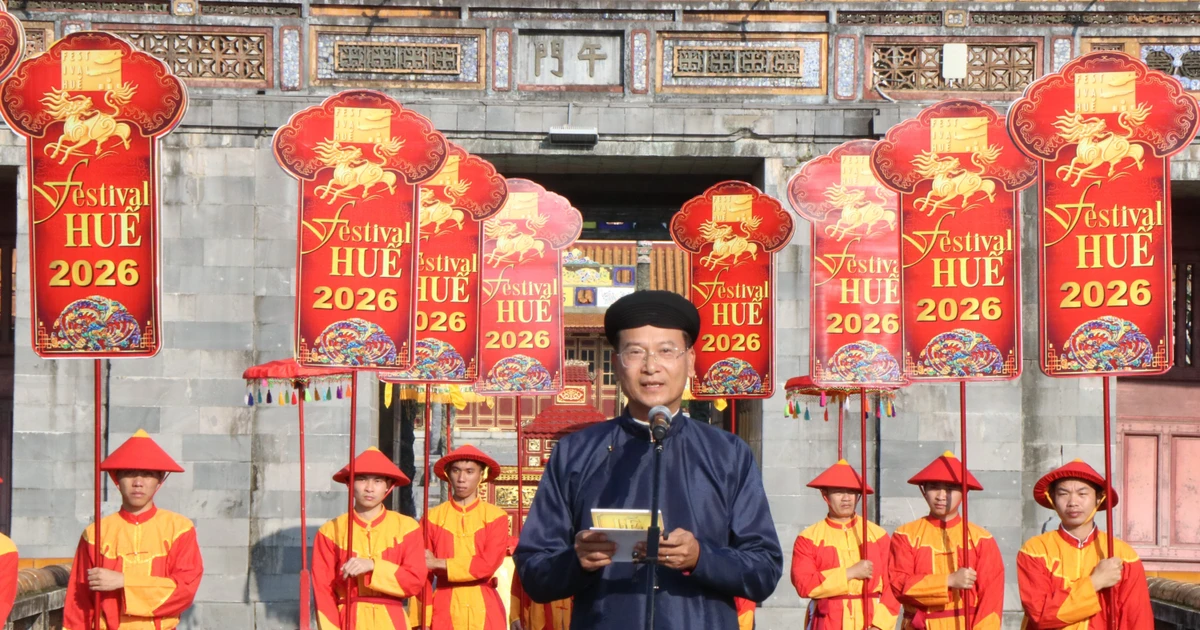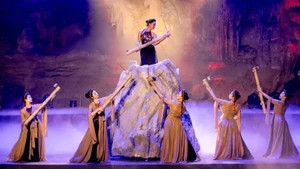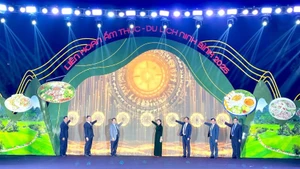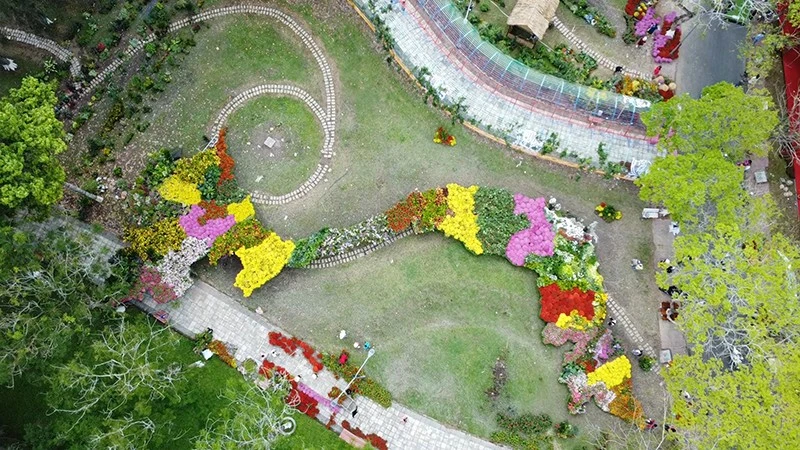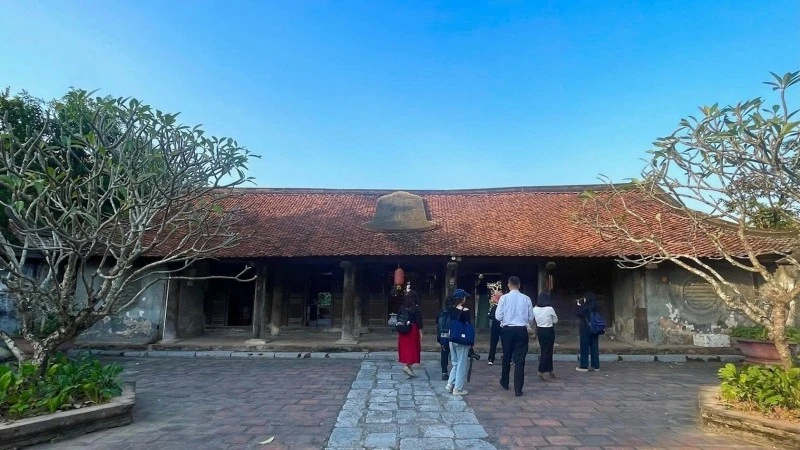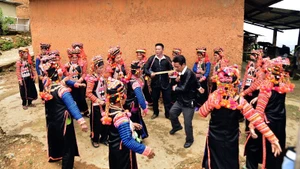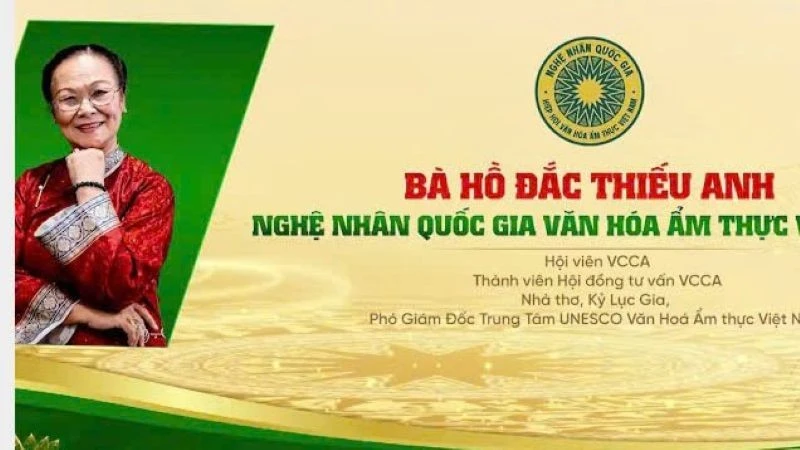On this journey of survival and connection, the Co people’s art of neu pole (bamboo pole) decoration stands out as a refined and unique form of folk sculpture, emblematic of artistic expression in the Truong Son region and across the vast Central Highlands.
For the Co people of the uplands, the neu pole is more than a decorative object—it is a sacred bridge linking earth and sky, an invisible conduit between humans, deities, and ancestors. The vivid patterns and sculpted forms adorning the neu pole are not merely aesthetic creations but heartfelt offerings representing villagers’ wishes and aspirations for a better life.
Radiant colours of sacred
The Co people, numbering over 40,000, mainly inhabit Quang Ngai province and Da Nang city. Depending on their place of residence, they are traditionally divided into two groups: those in the upper reaches of the Tra Bong River, and those living deep in the southwestern highlands.
Throughout their long history, living in rugged mountainous terrain, the Co have developed a resilient and inventive culture. Organised in autonomous villages often named after nearby rivers, forests, or mountains, their tradition of erecting the neu pole during buffalo sacrifice festivals marks a foundational practice in their cultural evolution.
The neu pole holds a vital role in the Co people’s spiritual life, serving as a symbol of faith across the community’s religious and cultural spaces. The decorative techniques employed represent the distilled essence of folk art passed down through millennia.
Their richly diverse natural environment has shaped the Co people’s culture, vividly expressed in ceremonies dedicated to deities, blessings for peace and harvest, new rice offerings, and buffalo sacrifice festivals, among many others.
Nearly 70 years old, People’s Artisan Ho Van Duong from Tay Tra commune, cannot recall exactly when he began crafting neu pole and ceremonial flags with his fellow villagers. Raised amidst mountains and forests, he learned from his father and village elders how to shape and decorate the poles for various rituals, including the buffalo sacrifice, post-harvest thanksgiving, and new rice celebrations.
According to Artisan Duong, depending on whether they come from the forested or riverine regions, the Co people’s carving techniques and decorative motifs vary. Ritual symbols, landscapes, sun and moon motifs, stilt houses, circles and triangles—all are stylised into a miniature world captured on the cay neu and ceremonial flags, reflecting both nature and the distinct cultural identity of the Co people.
Integrating nature and daily life into decorative design is a hallmark of the Co’s cultural identity. Depending on the specific ritual, cay neu poles vary, and even for the same type of pole, decoration styles differ slightly from region to region.
“Each time a neu pole is raised, the Co people perform sacred rituals. The patterns and symbols embody the collective will of the village to offer everything they have to the gods and ancestors, in hopes of a bountiful harvest and peaceful, prosperous life,” explained Ho Van De from Tay Tra commune.
The art of neu pole decoration among the Co in Quang Ngai province, has a long history and has been recognised as a national tangible cultural heritage. It affirms the unique cultural identity and vitality of the Co people in the Truong Son – Central Highlands region.
Safeguarding cultural lifeblood
Alongside other communities of the Truong Son – Central Highlands, the over 40,000 Co people living in Quang Ngai and Da Nang have cultivated a distinctive cultural legacy. Living amidst the mountains, the Co have developed admirable qualities and left behind a rich heritage of decorative art through the neu pole tradition.
Thanks to the government’s support, the lives of Co communities have significantly improved, fostering greater integration with other ethnic groups.
In recent years, village landscapes have flourished with gardens of cinnamon, medicinal herbs, and fruit trees, stretching along rivers and hillsides throughout the Truong Son mountains.
Cao Chu, a researcher of ethnic cultures and former Deputy Director of Quang Ngai’s Department of Culture, Sports and Tourism, remarked: “The Co people have an impressive mastery of herbal-based materials, using plants to craft tools for daily life. Their decorative art is distinct from that of other ethnic groups. Yet, with changing societal conditions, the bridge between tradition and modernity risks breaking. If old customs cannot adapt to new realities, they will gradually fade away.”
“Traditional culture used to be preserved naturally within its own space, but in today’s modern society, targeted policies are needed to ensure these beautiful customs are not lost with time,” he added.
Now a recognised element of national tangible cultural heritage, the Co people’s neu pole decoration art must be passed on to younger generations to ensure its continued vitality and preservation.
Experts, researchers, and artisans from Quang Ngai province and the broader Truong Son – Central Highlands region must step up efforts to support communities and inspire youth to engage with and sustain their passion for traditional folk art, ensuring its values are celebrated in modern life.
